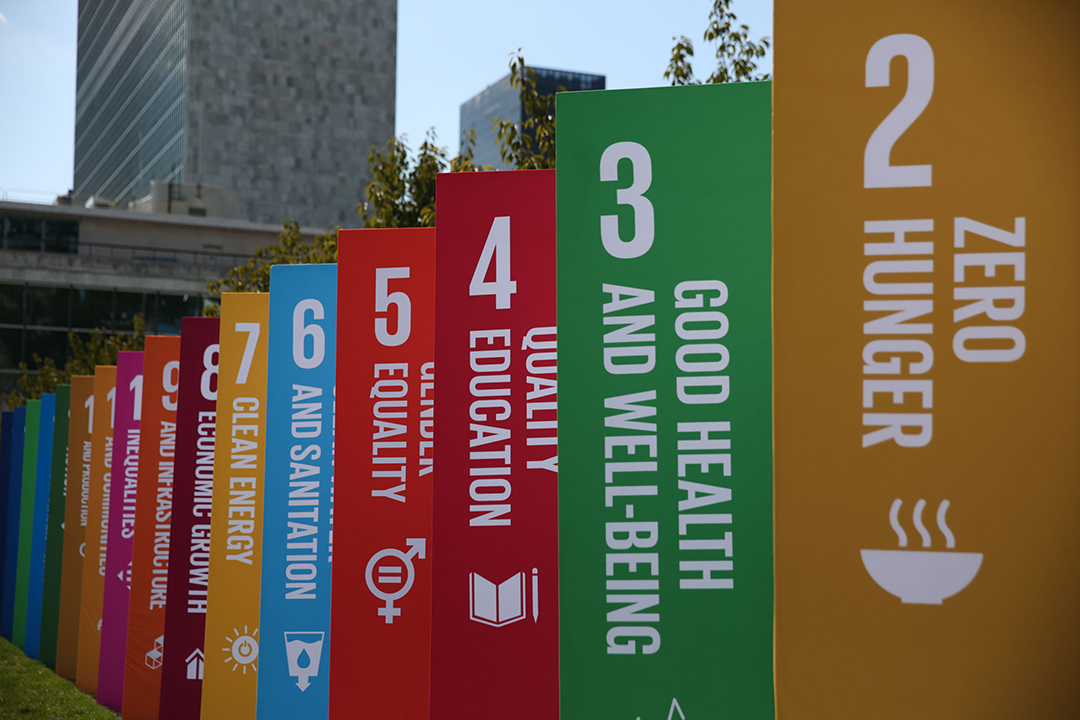Balancing growth and biodiversity: Why we need policy coherance on nature-based solutions
Biodiversity loss continues despite the 2022 UN Biodiversity Plan, with governments revising strategies ahead of COP16 in Colombia. Conflicts arise between infrastructure development and conservation. Effective policy coherence is crucial, integrating biodiversity into economic, climate, and development policies. Nature-based solutions offer benefits but face short-term barriers. Strengthening coordination across governments, businesses, and civil society is key to meeting global biodiversity targets by 2030.

- Two years after the landmark UN Biodiversity Plan was adopted in 2022, biodiversity loss continues unabated on an unprecedented scale.
- Governments are revising their national biodiversity strategies and action plans as the 16th UN Biodiversity Conference (COP16) in Colombia approaches, providing opportunities to take a whole-of-government approach.
- Effective implementation of biodiversity commitments requires coherent policies and a connection between biodiversity commitments and green jobs, climate transition, sustainable production, plastics and more.
It is a recurring dilemma: airports are crucial infrastructure for cities, regions, and entire economies. As air travel grows and flight safety demands increase, expanding airports seems inevitable. However, the land surrounding airfields often support vital ecosystems. These areas may provide nesting grounds for birds, breeding habitats for marine life or wetlands that play a key role in natural processes such as water filtration or flood protection.
Biodiversity is often at the heart of this conflict. Most agree that biodiversity, as our life support system, is essential, yet it is under immense pressure from land development, pollution, overexploitation and such activities. Immediate needs, such as housing, infrastructure development and agriculture, frequently lead to biodiversity loss and the degradation of ecosystem services.
For example, urban expansion converts natural landscapes into built environments, while agricultural and aquaculture intensification can pollute surrounding areas. The global cost of lost ecosystem services due to land use changes is estimated to be $4.3-20.2 trillion per year. The decline in genetic diversity also has profound effects, with 70% of cancer drugs derived from natural sources or inspired by nature.
We need smart solutions to address these conflicts. Coherent policies and laws are critical to guiding decision-making that benefits people, nature and economies.
Conflicting policies undermine biodiversity commitments
Over 150 national constitutions have provisions for safeguarding nature, and almost all countries have adopted environmental laws. India, Bolivia, Ecuador, and Panama are among the countries with constitutions that give nature its rights, while others, such as New Zealand, have such rights in national legislation.
But the world is losing biodiversity faster than ever, weakening people’s ability to thrive. This loss impacts our societies, economies and our ability to handle extreme weather events such as floods and droughts, which have become five times more frequent in the last 50 years. It also reduces our capacity to respond to climate change.
However, investing in biodiversity conservation and restoring ecosystems can open up economic opportunities, improve human and planetary health, reduce the cost of adapting to climate change and provide nature-based solutions to many of our challenges.
There should be no question. However, conflicting interests and short-term thinking often prevent us from fully utilizing nature-based solutions, such as creating green spaces to reduce urban heat.
With initiatives like Business For Nature’s “It’s Now for Nature” campaign and the TNFD Early Adopters programme, businesses are stepping up their efforts to protect biodiversity. Governments are also investing more in biodiversity and multilateral banks are exploring new ways to fund nature-based projects. However, the repurposing of subsidies harmful to biodiversity remains largely unaddressed.
The WTO Agreement on Fisheries Subsidies – adopted on 17 June 2022 – is a promising exception. It prohibits, among other things, subsidies that contribute to overfishing. While countries have been slow to ratify this agreement, it can inspire efforts to repurpose subsidies in other areas, notably agriculture.
Approaches for solving the policy coherence conundrum
We need more coherence between global, regional and national biodiversity, agriculture, trade, development and other economic policies. To strengthen policy coherence, we need integrated policy frameworks and interministerial coordination led by the highest level of government to weigh different interests, taking long-term effects into account.
Engaging the private sector and civil society early on in these consultation processes will help address conflicts at the outset. An example is Singapore’s Green Plan 2030, which combines optimizing land use with green building standards and creating more green open spaces, such as rooftop gardens and biodiversity-rich nature parks.
Another example of businesses leading the way on policy coherence is the Global Tuna Alliance. This alliance of independent coalitions of retailers and supply chain companies works closely with regional fisheries management organizations to ensure that their tuna meets the highest standards of environmental performance and social responsibility.
To strengthen policy coherence, we need integrated policy frameworks and interministerial coordination led by the highest level of government to weigh different interests, taking long-term effects into account. ”
Reflecting policy coherence in commitments and action
The focus of COP16 in Cali, Colombia, from 21 October to 1 November 2024, is to review progress towards implementing the Biodiversity Plan (otherwise known as the Kunming-Montréal Global Biodiversity Framework). Achieving the 23 global biodiversity targets will largely depend on coherent and effective national policies and the level of alignment with the Plan.
Governments are setting their national biodiversity targets and revising their national biodiversity strategies and action plans. This is an opportunity to strengthen policies, incentives and legislation that will drive the necessary action to halt and reverse nature loss by 2030, as called for by the Business for Nature coalition in its policy recommendations.
It is also an opportunity to align biodiversity policies with and integrate biodiversity in other policy areas. One obvious step would be reconciling national biodiversity strategies and action plans with the nationally determined contributions – commitments required under the Paris Agreement on Climate Change – as climate change and biodiversity are closely interconnected.
The World Economic Forum looks forward to working with committed actors to convene dialogues and conduct economic and policy research to advance this conversation.
What is Your Reaction?
 Like
1
Like
1
 Dislike
1
Dislike
1
 Love
1
Love
1
 Funny
0
Funny
0
 Angry
0
Angry
0
 Sad
0
Sad
0
 Wow
0
Wow
0










































































